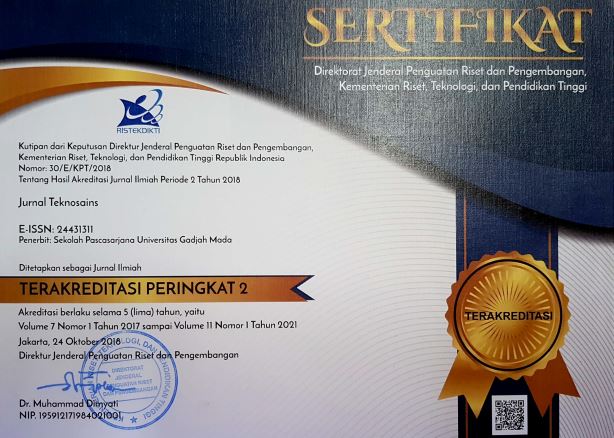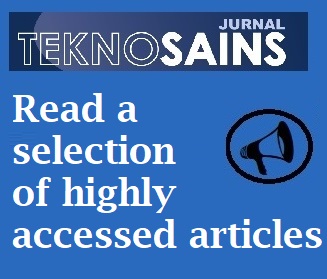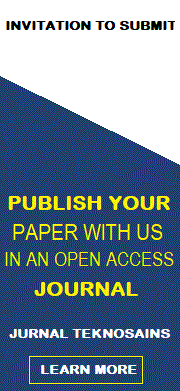Community interest in developing tourist villages based on neuroscience methods
Imam Indratno(1*), Chusarini Chamid(2), Tonny Judiantono(3), Vermanda Maharani Sonya(4), Nurrhisma Yuniar(5)
(1) Bandung Islamic University
(2) Bandung Islamic University
(3) Bandung Islamic University
(4) Bandung Islamic University
(5) Bandung Islamic University
(*) Corresponding Author
Abstract
Rawabogo Village is one of the tourist villages in Bandung Regency with insignificant development since its establishment. Community participation is important in the stages of development. However, measuring context in real time and accurately is generally difficult. Neuroscience can be used to control the validity and subjectivity of the questionnaire and interview methods used to examine neural responses to tourism conditions. Thus this study aims to identify the people of Rawabogo Village's interest in developing a tourism village based on neuroscience methods. The results of the data analysis show that the people of Rawabogo Village have a strong interest in developing a tourist village. The result is indicated by the entropy value obtained and the results of the questionnaire scoring. The neuroscience method in tourism village development acts as a method that supports, complements, and validates existing tourism village development concepts or methods such as Community Based Tourism (CBT).
Keywords
Full Text:
PDFReferences
[1] M. R. Pamungkas and I. Indratno, “Persepsi Masyarakat Berbasis Neurosains di Desa Wisata Rawabogo,” pp. 38–46, 2021.
[2] A. M. Siddiq, “Partisipasi Masyarakat Dalam Pengembangan Desa Wisata Rawaboyo Ciwidey Kabupaten Bandung,” 2013.
[3] Y. Siswantara and B. A. T. Sugiarto, “Rumah budaya sebagai ruang publik untuk mengembangkan kegiatan kepariwisataan di desa wisata rawabogo, kecamatan ciwidey, kabupaten bandung,” Lemb. Penelit. dan Pengabdi. Kpd. Masy. Univ. Katolik Parahyangan, 2012, [Online]. Available: http://journal.unpar.ac.id/index.php/Sosial/article/download/189/174.
[4] D. Herdiana, “Peran masyarakat dalam pengembangan desa wisata berbasis masyarakat,” Jumpa, vol. 6, no. 1, pp. 63–86, 2019.
[5] B. Sunaryo, Kebijakan Pembangunan Destinasi Pariwisata Konsep dan Aplikasinya di Indonesia. Gava Media, 2013.
[6] A. Wathon, “Neurosains Dalam Pendidikan Aminul Wathon,” J. Lentera Kaji. Keagamaan, Keilmuan dan Teknol., pp. 136–145, 2006.
[7] A. C. H. Hertanto and Y. Nurdian, “Kaitan Neurosains Neurobehavior Neuroplastisitas.” 2019.
[8] N. F. Saminan, “Frekuensi Gelombang Otak dalam Menangkap Ilmu Imajinasi dan Realita ( Berdasarkan Ontologi ),” vol. 3, no. 2, pp. 40–47, 2020.
[9] R. R. Aparnathi, C. U. S. Univeristy, and V. J. Dwivedi, “The study About Brain Wave Extreme Low frequency and Works Research Title : The study About Brain Wave Extreme Low frequency and Works Abstract – This purpose of this paper is to explore the technology used to map electromagnetic brain waves and the meani,” no. June 2014, 2016.
[10] S. Warner and D. Ph, “Cheat Sheet for Neurofeedback,” Stress Ther. Solut., 2013, [Online]. Available: http://www.stresstherapysolutions.com/uploads/STSCheatSheetoftheBrain.pdf.
[11] Q. G. Ma, L. F. Hu, G. X. Pei, P. Y. Ren, and P. Ge, “Applying neuroscience to tourism management: A primary exploration of neurotourism,” Appl. Mech. Mater., vol. 670–671, pp. 1637–1640, 2014, doi: 10.4028/www.scientific.net/AMM.670-671.1637.
[12] K. Hamida and S. Zulaekah, “Penyuluhan Gizi dengan Media Komik untuk Meningkatkan Pengetahuan tentang Keamanan Makanan Jajanan,” J. Kesehat. Masy., vol. 8, no. 1, pp. 67–73, 2012.
[13] A. Forqon, “Faktor-faktor penyebab menurunnya minat siswa mengikuti pembelajaran squash: (Studi D eskriptif Pada Siswa Sekolah Squash Bastaman Lodaya) Universitas Pendidikan Indonesia | repository.upi.edu | perpustakaan.upi.edu,” 2015.
[14] L. Etp and B. A. Wardijono, “Identifikasi Karakteristik Citra Berdasarkan pada Nilai Entropi dan Kontras,” J. Appl. Comput. Sci. Technol., vol. 2, no. 1, pp. 18–23, 2021.
[15] D. A. Masatu, I. Soesanti, and H. A. Nugroho, “Penerapan Algoritma Kompresi Jpeg Dan Metode Fuzzy C-Means Pada Kompresi Citra Berbasis,” Penelit. Tek. Elektro dan Teknol. Inf., vol. 1, no. 1, pp. 7–11, 2014.
[16] M. M. Chusni, A. Amelia, D. S. Azizah, K. F. Zafira, and R. D. Agustina, “Fenomena Entropi Dilihat Dari Perspektif Sains Dan Al-Qur’an,” SPEKTRA J. Kaji. Pendidik. Sains, vol. 4, no. 2, p. 105, 2018, doi: 10.32699/spektra.v4i2.51.
[17] Y. Akbar et al., “Entropi Spektral Resting State Sinyal Electroencephalogram pada Penderita Skizofrenia,” Pros. snips 2016, no. May, pp. 806–811, 2016, [Online]. Available: https://www.researchgate.net/publication/316679045_Entropi_Spektral_Resting_State_Sinyal_Electroencephalogram_pada_Penderita_Skizofrenia.
[18] R. Rivalina, “Neuroscience Approaches Improving High Order Thinking Skills of Basic Education Teacher,” J. Teknol. Pendidik., vol. 08, no. 01, pp. 83–109, 2020.
[19] S. Nugraheni, A. P. Husain, S. N. Rohani, U. I. N. Sunan, and K. Yogyakarta, “Pengembangan strategi pembelajaran berbasis neurosains untuk meningkatkan kemampuan mengarang peserta didik kelas v,” vol. 22, no. 1, pp. 57–69, 2022.
[20] S. Susanto and I. R. Munfarohah, “Neurosains Dalam Mengembangkan Kecerdasan Intelektual Peserta Didik Sd Islam Al-Azhar Bumi Serpong Damai,” Kordinat J. Komun. antar Perguru. Tinggi Agama Islam, vol. 19, no. 2, pp. 331–348, 2020, doi: 10.15408/kordinat.v19i2.19000.
Article Metrics
Refbacks
- There are currently no refbacks.
Copyright (c) 2023 Imam Indratno et al.

This work is licensed under a Creative Commons Attribution-ShareAlike 4.0 International License.
Copyright © 2024 Jurnal Teknosains Submit an Article Tracking Your Submission
Editorial Policies Publishing System Copyright Notice Site Map Journal History Visitor Statistics Abstracting & Indexing









